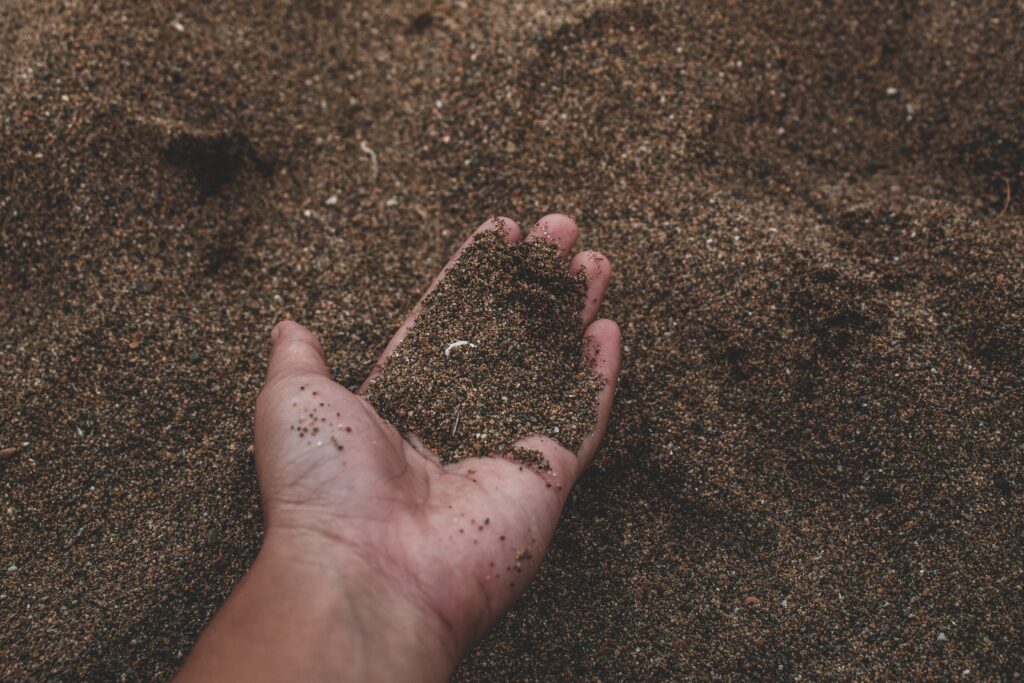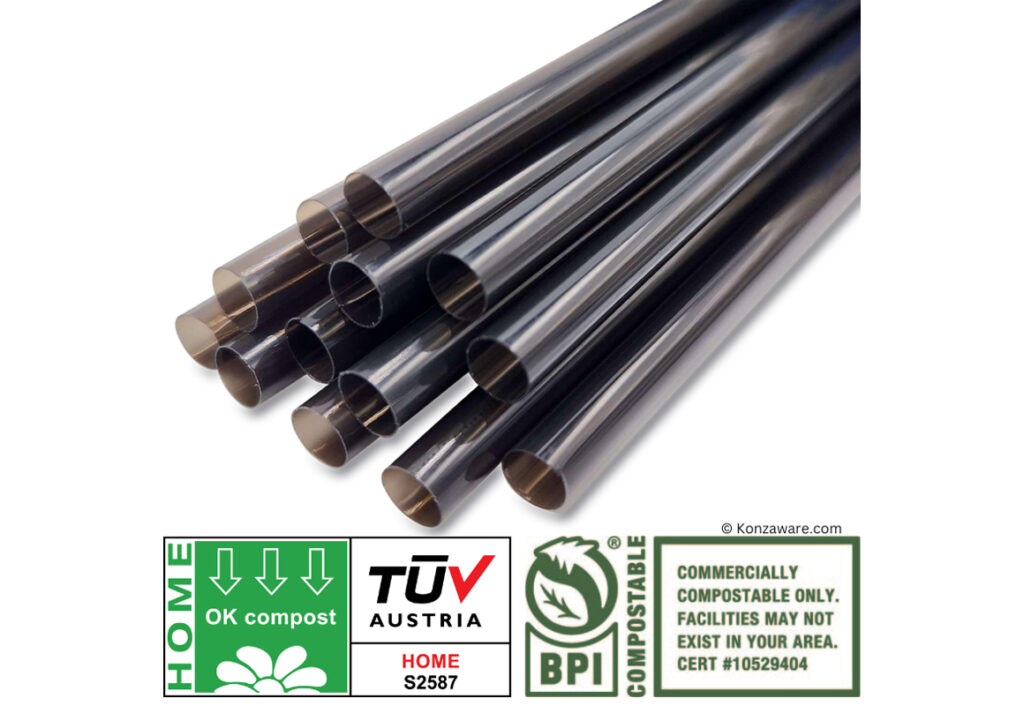Introduction:
The world is facing a major environmental crisis due to the excessive use of plastic products. Plastic straws, in particular, have been identified as a major contributor to the pollution of our oceans and landfills. In response to this problem, biodegradable straws have emerged as a sustainable alternative to traditional plastic straws. However, there is still some confusion about whether all biodegradable straws are truly eco-friendly and sustainable. And the question everyone wants to know is “are all biodegradable straws eco friendly?”
This article aims to provide a comprehensive guide to biodegradable straws, including their materials, decomposition process, environmental impact, and comparison with traditional plastic straws. We will also explore the factors to consider when choosing biodegradable straws and best practices for using and disposing of them. By the end of this article, you will have a clear understanding of whether biodegradable straws are a sustainable alternative to plastic and how to make informed choices when using them.
Environmentally friendly straws
Biodegradable straws are becoming increasingly popular as a sustainable alternative to traditional plastic straws. But what exactly are biodegradable straws? Biodegradable straws are made from materials that can break down naturally in the environment, such as plant-based materials like cornstarch, wheat straw, or bamboo. These materials are renewable and can be grown without the use of harmful pesticides or fertilizers, making them a more environmentally friendly option.
One of the most common materials used in biodegradable straws is PLA (polylactic acid), which is made from cornstarch. PLA straws are compostable and can break down in as little as 90 days in the right conditions. Other materials used in biodegradable straws include paper, which can be recycled or composted, and bamboo, which is a fast-growing and renewable resource.
Biodegradable straws are designed to break down naturally in the environment, which means they do not contribute to the plastic pollution problem that traditional plastic straws do. When disposed of properly, biodegradable straws can be composted or recycled, reducing their impact on the environment even further.
However, it is important to note that not all biodegradable straws are created equal. Some biodegradable straws may contain additives or chemicals that can harm the environment, and not all biodegradable straws are compostable or recyclable. It is important to do your research and choose biodegradable straws that are certified as compostable or recyclable by reputable organizations.
In conclusion, biodegradable straws are a sustainable alternative to traditional plastic straws. They are made from renewable materials and can break down naturally in the environment, reducing their impact on the environment. However, it is important to choose biodegradable straws that are certified as compostable or recyclable to ensure that they are truly eco-friendly.
Biodegradable materials
Biodegradable straws are made from a variety of materials, each with its own unique properties and benefits. Some of the most common materials used in biodegradable straws include paper, bamboo, wheat straw, and cornstarch.
Paper straws are one of the most popular types of biodegradable straws. They are made from renewable resources and are fully compostable. Paper straws are also affordable and widely available, making them a convenient choice for businesses and consumers alike.
Bamboo straws are another popular option. They are durable, reusable, and biodegradable. Bamboo is a fast-growing plant that requires minimal resources to grow, making it a sustainable choice for eco-conscious consumers.
Wheat straw straws are made from the stalks of wheat plants. They are biodegradable, and compostable, and can be produced without the use of harmful chemicals. Wheat straw straws are also strong and durable, making them a great choice for use in restaurants and cafes.
Cornstarch straws are made from a biodegradable polymer derived from corn. They are fully compostable and break down quickly in the environment. Cornstarch straws are also heat-resistant and can be used with hot and cold beverages.
KonzaWare biodegradable straws are made from sustainable wood pulp. They look and feel like regular plastic, yet they are made of soil and marine biodegradable material. They are backyard compostable.
Overall, the materials used in biodegradable straws are chosen for their sustainability, biodegradability, and durability. By choosing biodegradable straws over traditional plastic straws, consumers can help reduce the amount of plastic waste that ends up in landfills and oceans.
The decomposition process of biodegradable straws
Biodegradable straws are designed to break down naturally over time, unlike traditional plastic straws which can take hundreds of years to decompose. The decomposition process of biodegradable straws depends on the materials used in their production.
Some biodegradable straws are made from plant-based materials such as cornstarch, sugarcane, or bamboo. These materials are renewable and can be grown quickly, making them a sustainable alternative to traditional plastic straws. When these straws are disposed of, they will break down naturally in the environment, usually within a few months to a year.
Other biodegradable straws are made from biodegradable plastics, which are petroleum-based materials that are designed to break down more quickly than traditional plastics. These materials are still controversial, as they may not break down completely and can still release harmful chemicals into the environment.
The decomposition process of biodegradable straws can be accelerated by exposing them to heat, moisture, and microorganisms. This can be done through composting, which is the process of breaking down organic materials into nutrient-rich soil. Composting biodegradable straws can help to reduce waste and provide a sustainable source of fertilizer for plants.
It is important to note that not all biodegradable straws are created equal. Some may claim to be biodegradable but may not break down as quickly or completely as others. It is important to look for certifications such as the TUV Austria OK compost HOME, which indicate that the product has been tested and meets certain standards for biodegradability and compostability.
In conclusion, the decomposition process of biodegradable straws depends on the materials used in their production and can be accelerated through composting. It is important to choose biodegradable straws that have been certified as meeting certain standards for biodegradability and compostability to ensure that they are truly environmentally friendly and sustainable alternatives to traditional plastic straws.
The environmental impact of biodegradable straws
While biodegradable straws are marketed as a sustainable alternative to traditional plastic straws, it is important to understand their impact on the environment.
Biodegradable straws are made from materials that can break down naturally over time, such as cornstarch, bamboo, or paper. When these straws are disposed of, they will eventually decompose and return to the earth. This is in contrast to traditional plastic straws, which can take hundreds of years to decompose and can harm wildlife and ecosystems in the meantime.
However, it is important to note that the environmental impact of biodegradable straws depends on how they are disposed of. If biodegradable straws are not disposed of properly, they can still contribute to pollution and harm the environment. For example, if biodegradable straws are littered or end up in landfills, they may not have access to the oxygen and sunlight needed for proper decomposition. This can lead to the release of methane, a potent greenhouse gas, and other harmful pollutants.
Additionally, the production of biodegradable straws can also have an environmental impact. The materials used to make biodegradable straws may require energy-intensive processes, such as farming or manufacturing, which can contribute to greenhouse gas emissions and other environmental issues.
Overall, while biodegradable straws can be a more sustainable alternative to traditional plastic straws, it is important to consider their environmental impact and ensure they are disposed of properly. Consumers can make a difference by choosing biodegradable straws made from sustainable materials and properly disposing of them in compost or recycling facilities. By doing so, we can help reduce the amount of plastic waste in our environment and move towards a more sustainable future.
Comparing biodegradable straws and traditional plastic straws
This is an important topic as it helps us understand the impact of our choices on the environment.
Traditional plastic straws are made from petroleum-based plastic, which is not biodegradable and can take hundreds of years to decompose. This means that plastic straws end up in landfills, oceans, and other natural habitats, causing harm to wildlife and the environment.
On the other hand, biodegradable straws are made from natural materials such as cornstarch, bamboo, or paper. These materials are biodegradable, which means they can break down naturally and do not harm the environment.
When it comes to durability, traditional plastic straws are known to be strong and long-lasting, while biodegradable straws may not be as durable. However, this does not mean that biodegradable straws are not a good alternative. In fact, many biodegradable straws are designed to be sturdy and can last for a reasonable amount of time.
Another factor to consider is the cost. Traditional plastic straws are cheap and readily available, while biodegradable straws may be more expensive due to the cost of the materials used. However, the cost of biodegradable straws is often offset by the environmental benefits they provide.
In conclusion, while traditional plastic straws may be cheaper and more durable, they have a significant negative impact on the environment. Biodegradable straws, on the other hand, are a sustainable alternative that can help reduce our carbon footprint and protect the environment. When choosing between the two, it is important to consider the environmental impact and the long-term benefits of using biodegradable straws.
Are all biodegradable straws eco-friendly?
Many people are looking for sustainable alternatives to traditional plastic straws, but they may not be aware of the potential drawbacks of biodegradable options.
The answer to this question is not a simple yes or no. While biodegradable straws are generally considered to be more environmentally friendly than traditional plastic straws, there are still some factors to consider.
Firstly, the materials used in biodegradable straws can vary widely. Some are made from plant-based materials like cornstarch or bamboo, while others may be made from petroleum-based plastics that have been modified to break down more easily. It’s important to look for biodegradable straws that are made from renewable, sustainable materials.
Secondly, the decomposition process of biodegradable straws can also vary. Some may require specific conditions, such as high temperatures or exposure to certain enzymes, in order to break down properly. Others may break down more easily in natural environments like soil or water. Still, others like PLA straws require an industrial composting facility to break down, though there are not many such facilities in the USA. It’s important to choose biodegradable straws that will break down in a way that is safe for the environment.
Finally, the environmental impact of biodegradable straws can depend on how they are disposed of. If they are not properly disposed of in a composting or recycling facility, they may still end up in landfills or oceans where they can contribute to pollution. It’s important to follow best practices for using and disposing of biodegradable straws to minimize their impact on the environment.
In conclusion, while biodegradable straws are generally considered to be more eco-friendly than traditional plastic straws, it’s important to consider the materials used, the decomposition process, and the proper disposal methods in order to ensure that they are truly sustainable alternatives. By making informed choices about biodegradable straws, we can all do our part to reduce plastic waste and protect the environment.
Factors when choosing biodegradable straws
There are several factors to consider to ensure that they are truly eco-friendly and sustainable alternatives to traditional plastic straws. Here are some of the key factors to keep in mind:
1. Material source: The source of the materials used in biodegradable straws is important to consider. Ideally, the materials should be renewable and sustainably sourced, such as plant-based materials like cornstarch or bamboo.
2. Biodegradability: Not all biodegradable straws are created equal. Some may only break down under certain conditions, such as high temperatures or specific microbial environments. Look for straws that are certified to biodegrade in a variety of environments, including marine environments.
3. Production process: The production process for biodegradable straws should also be considered. Look for manufacturers that use eco-friendly practices, such as minimizing waste and using renewable energy sources.
4. Packaging: The packaging for biodegradable straws should also be eco-friendly. Look for straws that come in minimal or recyclable packaging.
5. Cost: While biodegradable straws may be more expensive than traditional plastic straws, it’s important to consider the long-term environmental and social costs of using plastic. Investing in sustainable alternatives can ultimately save money in the long run.
By considering these factors, you can make an informed decision when choosing biodegradable straws. It’s also important to remember that even biodegradable straws should be used and disposed of responsibly. Avoid single-use straws whenever possible, and dispose of biodegradable straws in compost or recycling bins. With these best practices in mind, biodegradable straws can be a sustainable and eco-friendly alternative to traditional plastic straws.
Best practices for using and disposing of biodegradable straws
While biodegradable straws are a more sustainable alternative to traditional plastic straws, it is important to use and dispose of them properly to ensure their environmental benefits.
One of the best practices for using biodegradable straws is to avoid using them for extended periods of time. Biodegradable straws are designed to break down over time, and using them for too long can cause them to break down prematurely. It is also important to avoid exposing biodegradable straws to high temperatures, as this can speed up the decomposition process.
When it comes to disposing of biodegradable straws, it is important to follow the proper waste management guidelines. Biodegradable straws should be disposed of in compost bins or other organic waste streams, as they require specific conditions to break down properly. It is also important to avoid throwing biodegradable straws in the trash, as they will not break down in landfills and can contribute to environmental pollution.
Another best practice for using and disposing of biodegradable straws is to choose products that are certified as compostable. This ensures that the straws are made from materials that will break down properly in composting facilities and that they meet specific environmental standards.
Overall, using and disposing of biodegradable straws properly is essential for ensuring their environmental benefits. By following best practices and choosing certified compostable products, we can help reduce our reliance on traditional plastic straws and move towards a more sustainable future.




